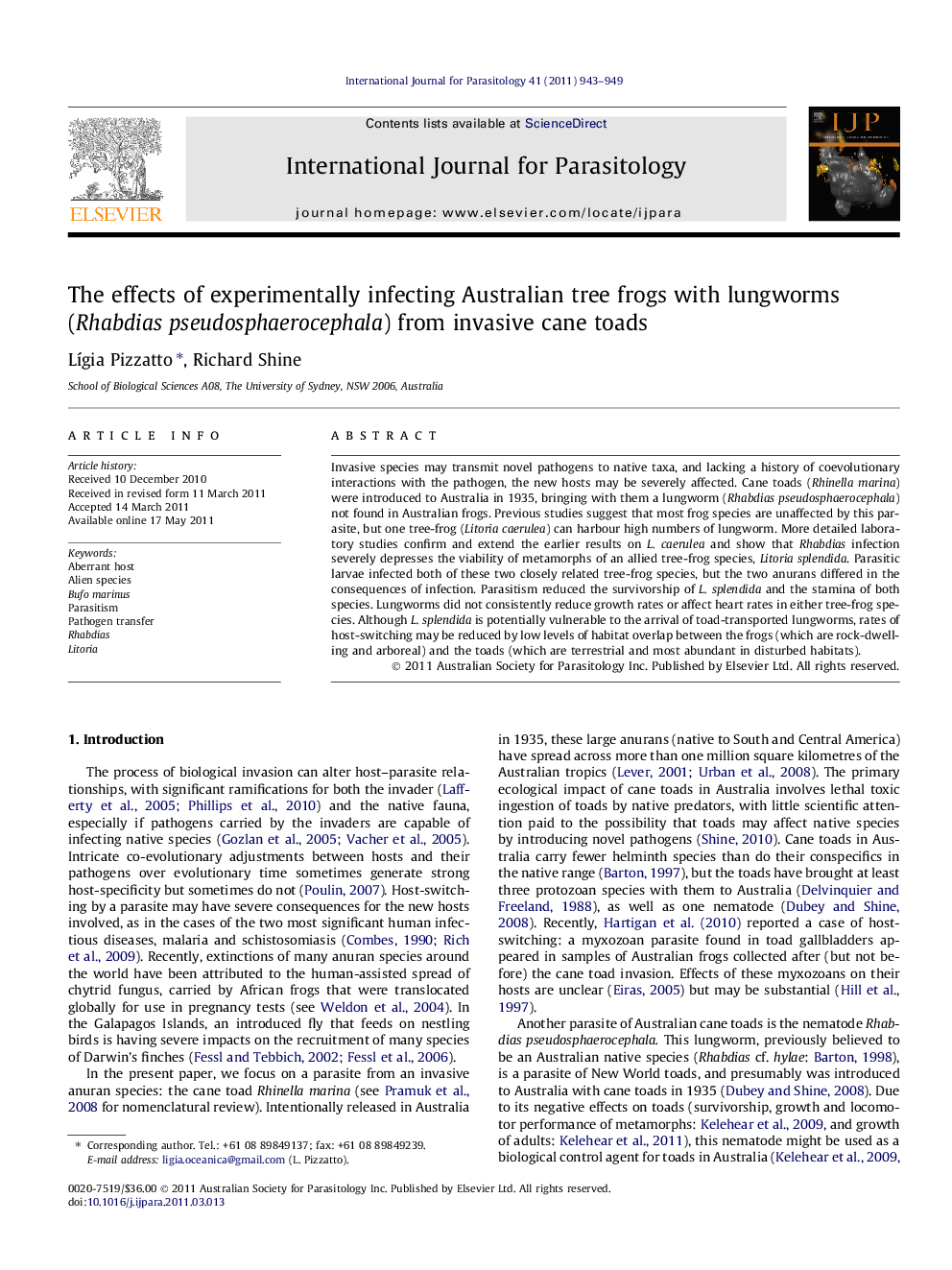| Article ID | Journal | Published Year | Pages | File Type |
|---|---|---|---|---|
| 2436172 | International Journal for Parasitology | 2011 | 7 Pages |
Invasive species may transmit novel pathogens to native taxa, and lacking a history of coevolutionary interactions with the pathogen, the new hosts may be severely affected. Cane toads (Rhinella marina) were introduced to Australia in 1935, bringing with them a lungworm (Rhabdias pseudosphaerocephala) not found in Australian frogs. Previous studies suggest that most frog species are unaffected by this parasite, but one tree-frog (Litoria caerulea) can harbour high numbers of lungworm. More detailed laboratory studies confirm and extend the earlier results on L. caerulea and show that Rhabdias infection severely depresses the viability of metamorphs of an allied tree-frog species, Litoria splendida. Parasitic larvae infected both of these two closely related tree-frog species, but the two anurans differed in the consequences of infection. Parasitism reduced the survivorship of L. splendida and the stamina of both species. Lungworms did not consistently reduce growth rates or affect heart rates in either tree-frog species. Although L. splendida is potentially vulnerable to the arrival of toad-transported lungworms, rates of host-switching may be reduced by low levels of habitat overlap between the frogs (which are rock-dwelling and arboreal) and the toads (which are terrestrial and most abundant in disturbed habitats).
Graphical abstractFigure optionsDownload full-size imageDownload high-quality image (95 K)Download as PowerPoint slideHighlights► Two frog species experimentally infected with exotic toad lungworms. ► Both species hosted high intensity and prevalence of worms. ► One species suffered high mortality. ► Infection reduced endurance but had minor effects on heart rates of both frogs. ► Infection did not affect growth.
